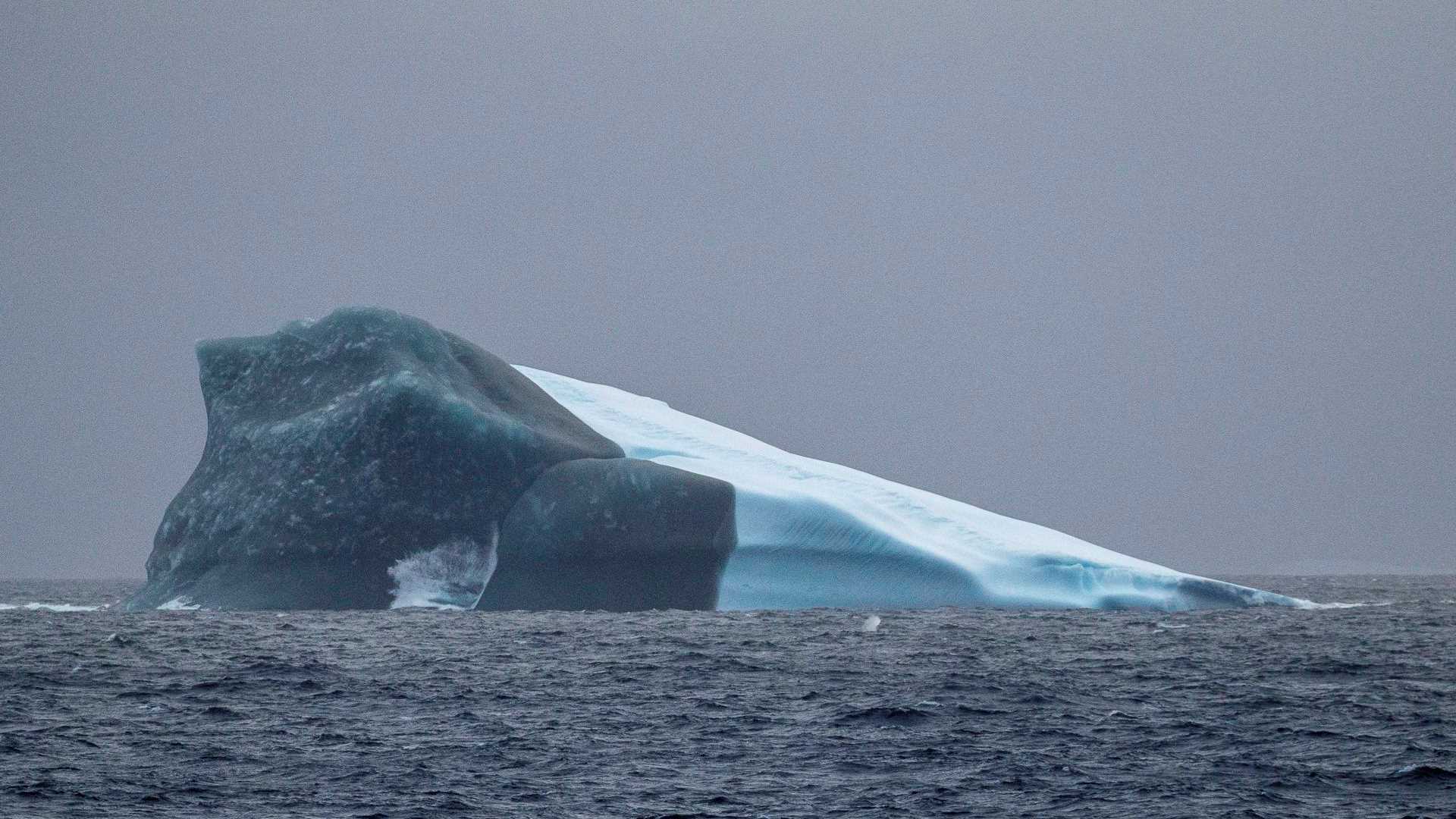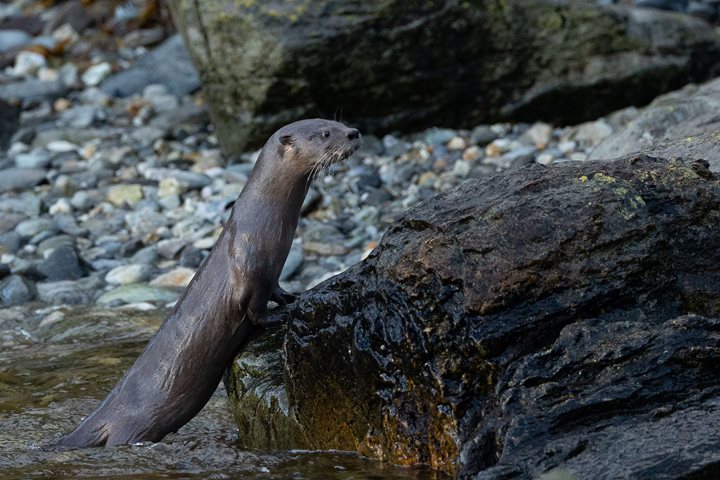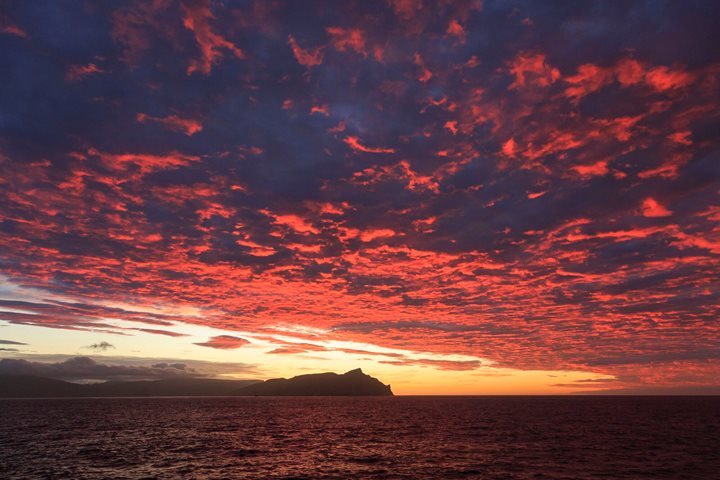Time at sea, whether a short crossing between nearby islands or a days-long journey between distant shores, is seldom uneventful. Sightings of whales and seabirds, lovely sunrises and sunsets, changing weather and simply watching the waves go by all fill the days with special pleasures. But this morning, approaching the South Orkney Islands, we encountered something exceptionally rare and fascinating. For several hours and over a course of more than fifty miles, we made our way through a field of magnificent icebergs, ten or twenty of them in sight at any moment. Slowly eroding shapes and an endless variety of caves, towers and arched battlements created a frozen fantasy landscape. It drew many of us to the windows and open decks to watch. All of this was quite wonderful, but another feature of this huge swarm of bergs set them apart from what most of us, even the most experienced among us, had seen before. Many of the bergs had large sections of dark green ice that contrasted vividly with the snowy white and deep pure blue of the more normally colored areas. This was marine ice.
Marine ice forms on the undersides of ice shelves, the huge floating glaciers that flow out over the sea from many parts of Antarctica’s coastline. When super-chilled water from deep below the shelf upwells and reaches the bottom of the glacial ice, it freezes into a very distinct form. It contains even less salt than normal sea ice, and it is nearly bubble-free and so very clear. The ice is often green, ranging from a deep dark green to a soft aqua. Until recently, it was thought that this color came from phytoplankton – dissolved organic carbon containing the photosynthetic pigments that make the single-celled plankton green themselves. Recent studies have shown that the marine ice is not enriched by dissolved organic matter, but by iron compounds that have orange and yellow colors. When the iron compounds combine with the natural blue of normal ice, this gives the marine ice its rare color. Regardless of the science behind it, seeing so much beautiful marine ice in this field of huge bergs was a very special thrill for our morning at sea.
We spent the morning cruising through the bergs and along the south coast of Coronation Island, the largest in the South Orkney archipelago. In the afternoon, we made a landing at a little-known spot on Signy Island. We went out for some wonderful hikes in a typical South Orkney landscape – ice and rock decorated with a fantastic profusion of mosses and lichens. It was a great day, on land and sea!







